Related Research Articles
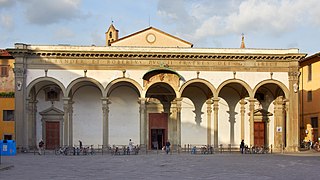
The Basilica della Santissima Annunziata is a Renaissance-style, Catholic minor basilica in Florence, region of Tuscany, Italy. This is considered the mother church of the Servite Order. It is located at the northeastern side of the Piazza Santissima Annunziata near the city center.

Amico Aspertini, also called Amerigo Aspertini, was an Italian Renaissance painter and sculptor whose complex, eccentric, and eclectic style anticipates Mannerism. He is considered one of the leading exponents of the Bolognese School of painting.
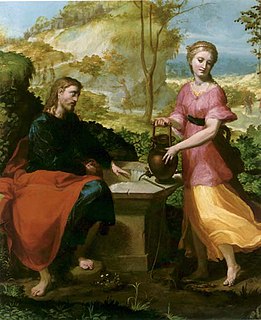
Michelangelo Anselmi was an Italian Renaissance-Mannerist painter active mostly in Parma.

Domenico Passignano, born DomenicoCresti or Crespi, was an Italian painter of a late-Renaissance or Counter-Maniera (Counter-Mannerism) style that emerged in Florence towards the end of the 16th century.

Giovanni Marracci (1637–1704) was an Italian Baroque painter who after training with Pietro da Cortona in Rome, worked in his home region of Lucca where he painted many altarpieces.
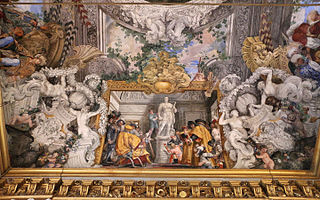
Filippo Gherardi (1643–1704) was an Italian painter of the Baroque period.

Giovanni Coli (1636–1691) was an Italian painter from Lucca, active in the Baroque style.

Lazzaro Baldi was an Italian painter and engraver of the Baroque period, active mainly in Rome.
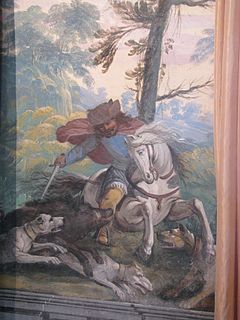
Pietro Ricchi was an Italian painter of the Baroque period, born in Lucca.
Michele Ridolfi was an Italian painter and art critic.
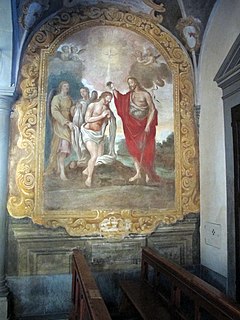
Anton Domenico Bamberini (1666–1741) was an Italian painter, mainly of religious Baroque frescoes in churches completed in a heavily ornamented and stuccoed trompe-l'œil frames and settings.
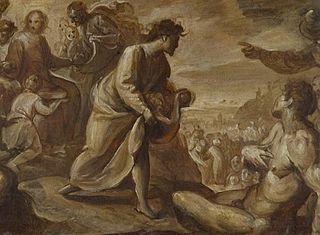
Pietro Sorri (1558-1622) was an Italian painter active in Siena.

Giovanni Maria Ciocchi was an Italian painter and art critic, active during the Baroque period. He was born into a family of artists, and it is not clear if he is related to Giovanni Maria Ciocchi del Monte from Perugia, who became Pope Julius III. it is not clear that Giovanni Maria is related to the 16th century painter Ulisse Ciocchi.

Nicola Maria Rossi, also known as Nicolò Maria was an Italian painter of the late-Baroque.
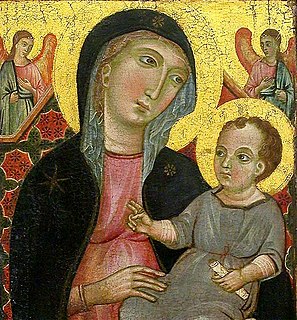
Deodato Orlandi was an Italian painter who was active in Lucca and Pisa. His work marks the transition from the Italo-Byzantine painting of the 13th century to the Giotto-inspired style of the 14th century.
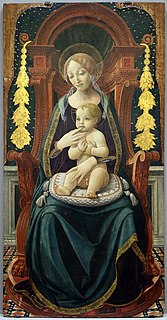
Baldassarre di Biagio, also called Baldassarre di Biagio del Firenze or the Master of the Tryptych of Benabbio, (1430/1434–1484) was an Italian painter of the high Renaissance period.
Girolamo Massei was an Italian Mannerist painter active mostly in Rome.
Giovanni di Apparecchiato, also called il Nuccaro was an Italian painter of the Gothic period in Pisa.

The Certosa di Pontignano, also known as the Certosa di San Pietro, is a Carthusian monastery and church in the neighborhood of Pontignano, within the town limits of Castelnuovo Berardenga, a few kilometers north of the city of Siena, in the region of Tuscany, Italy. The monastic complex, after the expulsion of the monks in 1810, passed through various hands, until it was acquired in 1959 by the University of Siena, and used for academic meetings, conventions, and also hotel and restaurant for events such as weddings and celebrations.
Luigi De Servi was a French-Italian painter active mainly painting sacred subjects in a late-Mannerist style in Siena, Tuscany, Italy.
References
- Bryan, Michael (1886). Robert Edmund Graves (ed.). Dictionary of Painters and Engravers, Biographical and Critical. Vol. I: A-K. London: George Bell and Sons. p. 247.
- ↑ Encyclopedia Trecanni, Dizionario Biografico degli Italiani - Volume 21 (1978), entry by Anchise Tempestini.